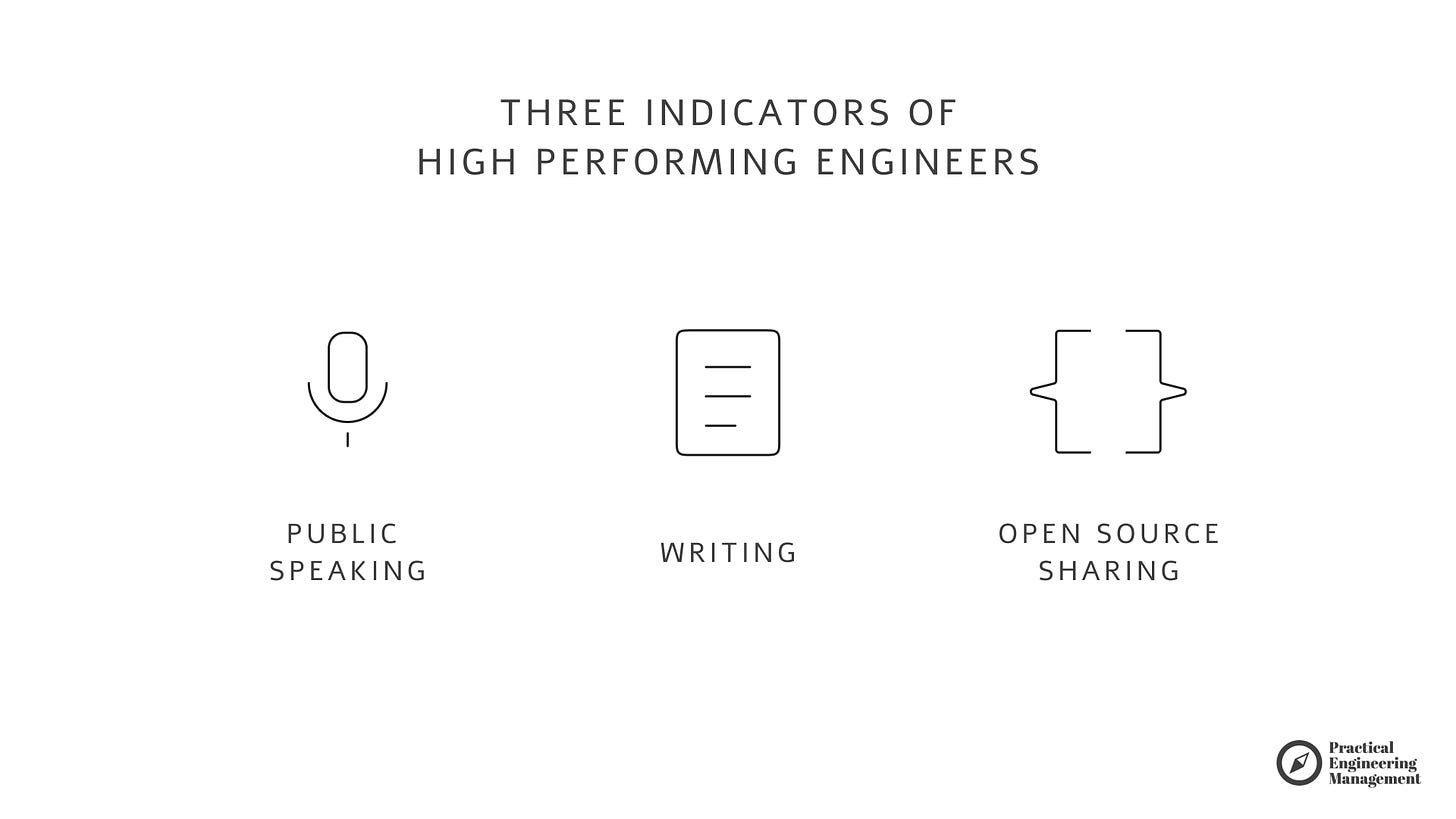Writing, Public Speaking, Open Source
Three Indicators of High-Performing Engineers
In my recent posts, I've been sharing my reflections on building diverse and high-performing teams.
The goal is to explore this topic from various angles, which is why I wrote about how "Cultural Fit" Can Harm Your Team. I also reviewed several frameworks for archetypes and personality classification, such as CliftonStrengths, True Colors, and Jungian Archetypes, which I’ve been using in my work.
Today, I want to focus on three specific skills—writing, public speaking, and open-source contribution. After a decade of building engineering teams and organizing annual internship programs, I’ve found these to be highly accurate indicators of high-performing engineers.
In this article, I invite you to explore these three traits in depth. We’ll look at why they should shape your hiring criteria and how you can nurture them in your current team. I’ve come to see these as true gems that not only improve individual engineers but also elevate the entire organization.
1 - Writing: The Glue of the Remote-First World
Whether your organization is remote, hybrid, or co-located in the same office, most communication happens online anyway. It’s rare that everyone’s on the same schedule, so you end up using the company chat or old-fashioned emails anyway. To manage your know-how, you document things online—in classic docs, virtual whiteboards, or design decks. You share meeting notes after it’s done. And you take photos of your flipcharts just to keep adding more comments via Google Docs, Confluence, FigJam, and other tools.
Today, written communication is the primary conveyor of information. Collective intelligence, standardization, and knowledge-sharing practices are critical to building a Remote-First Culture (yes, your in-office company can adopt a remote-first mindset too). That’s why ensuring you hire or develop good writers will make your team shine.
Here are three critical aspects of writing for every software engineer and engineering leader:
Clarity and Context: Good writing forces you to clarify your thoughts before sharing them, making it easier for others to understand complex technical ideas.
Knowledge Sharing: Documentation, READMEs, and Slack updates become the living knowledge base of your product. Properly written content accelerates onboarding and reduces unnecessary questions.
Influence: Ever written a design doc that got immediate buy-in? It usually means you nailed the story—the problem, the approach, and the data behind your decisions (for the structured way of doing so, I invite you to check The Problem Solving Framework).
Wait, but can’t we just ask ChatGPT to write for us?
Of course, we can, but mentioned writing skills become even more critical in this scenario. You can quickly generate long pages of text, yet without good moderation, they only become fluff—bloated content no one will ever read. To learn more about the challenges of Generative AI, check out my article, "The Engineering Leader of 2025 and Beyond."
Today, everyone can generate text. But it doesn’t mean everyone can write good content.
The Use Case: Translating Tech for Product (and Vice Versa)
The entire article and PDF/Notion/doc templates are available only for paid subscribers. You can use the training budget (here’s a slide for your HR).
Thanks for supporting Practical Engineering Management!



